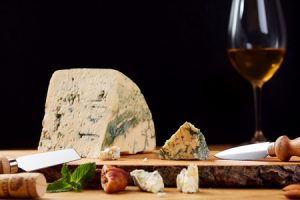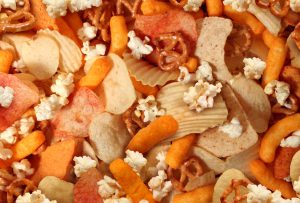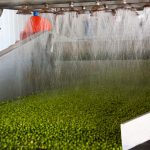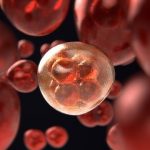
Ultra-processed food (UPF) is very much in the spotlight following recent pieces of research that have looked at their consumption and the association with a host of diseases such as cancer, cardiovascular disease, premature death and diabetes.
It is estimated that at least half the calories in a typical person’s diet living in the UK now comes from ultra-processed foods. It is certainly higher in the USA and is a substantial portion of people’s diets right around the globe.
The NOVA Food Classification
About a decade ago, nutritionists in Brazil established a classification system for levels of processed food. There are 4 groups or grades as they are sometimes called in this classification system. The Group Four foods are ultra-processed foods and have been the cause of considerable controversy because whilst a number have been associated with poor nutrition there are those such as the fortified cereals which have had considerable economic and health benefits such as reducing neural tube defects as in the addition of folate for example. It’s also worth noting from the outset that processing generally improves the nutritional value of a raw food.
It’s worth just going through these groupings.
Group One: Unprocessed And Minimally Processed Foods

All unprocessed and minimally processed foods contribute 30 per cent of all the calories consumed as part of a typical diet in the UK. The unprocessed foods include:
- fruit and vegetables
- seeds
- nuts
- grains
- beans and pulses
- natural animal products such as fish, eggs, milk
- fungi
The minimally processed foods are usually selected from the list above which receive some form of processing. The type of processing includes, drying, cooking, blanching, boiling, roasting, pasteurising and freezing.
No additional ingredients are added.
The types of food in the minimally processed list would include:
- 100 per cent fruit juice
- frozen fruits and vegetables
- frozen fish and seafood
- pasteurised milk
- no-added-sugar yogurt
- spices and dried herbs
Group Two: Processed Cooking And Culinary Ingredients

The processed culinary ingredients are generally all those that are added to recipes and dishes. They are rarely eaten alone but are often added to any of the foods in Group One. About 4 per cent of the UK diet contains any one of these ingredients. They include:
- oils
- fats
- butter and lard
- vinegar
- sugars
- salt
Group Three: Processed Foods

The processed foods are made up of any of the foods in Group One and Two. About 9 per cent of all foods consumed in the UK include these types of food. These are:
- smoked and cured meats,
- cheese
- bacon
- salted and sugared nuts
- fresh bread
- beer
- wine
Processing to create these types of food is an extremely important method of extending shelf-life, and enhancing and improving flavour. Without it some foodstuffs would be extremely unsafe to eat.
Group Four: Ultra-Processed Foods

Ultra-Processed Foods are those that contain added ingredients such as emulsifiers, flavourings, colours, preservatives, stabilisers, vitamins and minerals. They are not usually added in home cooking although they can be purchased for the purposes just mentioned. The most common ultra-processed foods are:
- manufactured/commercial bread and buns
- ready-to-eat meals
- breakfast and fortified cereals
- baby foods
- medical foods
- nutritional bars
- sodas including energy drinks
- snacks (savoury and sweet)
- confectionary and sweets
- sausages and any reconstituted meat foods such as hot dogs
- plant-based and vegan burgers
- industrial chips
- fruit juices
Recognising an ultra-processed food is not straightforward and requires some knowledge of how food is made and processed. There are some general characteristics such as having an ingredient list which is usually more than five in number although in some cases this is complicated because some of these ingredients are present in very to extremely small amounts.
The NOVA Classification
The NOVA classification has also been described as a movement. Nutritionists for and against the idea of relating a class of foods to particular disease states have been troubled by the level of disruption this classification has caused. It has also led to skepticism in the value of processed food of any sort and for some sectors of the population, a high level of poorly-judged understanding about food itself.
At the Shift20 virtual event in 2020, organised by the Institute of Food Technologists in the USA, a session was devoted to countering the issues raised behind processed foods generally but ultra-processed food in particular.
There is nothing wrong with setting up a classification system but the issues are really about how this is used as a tool to manage people’s nutrition and set food policy. It has now entered the political sphere and as commentators often like to call it become ‘weopanised’.
The Ultra-Processed Food Controversy
The consumption of ultra-processed food (UPF) has been associated with increased risks of cancer, heart disease and other conditions such as premature death. The food itself is not a cause of disease because it has its own particular level of nutrition but there are those who believe that excessive consumption of such foods is at the root of the problem. It’s also true that added ingredients are in themselves not toxic although past experience has shown that some that used to be added were indeed dangerous in excess. However, all ingredients are rigorously tested for their levels of toxicity with limits defined for them. Indeed some health ingredients are also poisonous if taken to excess. One of the most controversial concerns the presence of nitrates and nitrates in the curing of bacon
It’s also the case that all foods from Group One through to Group Three have been associated with particular health issues through ill-informed nutritional requirements. Grilling asparagus, frying potatoes and some protein rich raw foods for example generates acrylamide.
One of the concerns about ultra-processed foods is the level of marketing and advertising of products. Enormous sums of money are spent on promoting many processed foods.
Another important issue relates to palatability and taste. The focus on additives comes from their use to improve the flavour of food or make it especially appealing. If it’s too enjoyable to eat then this type of food supersedes all others in preference. The same has been claimed for processes too which improve the texture or make it easier to masticate. If you then add in low-cost ingredients and processing which make it cheaper to buy, increase the shelf-life and combine it with emphatic branding, the food i.e. UPF, is hyperpalatable. The concern is that such food displaces all other NOVA classified produce especially the Group One foods which nutritionists ideally would like all of us to eat more of.
Food Safety And Nutrition Could be Compromised For Some If Ultra-Processed Food Was Banned
If the group of ultra-processed foods was to be avoided or banned from sale it could throw baby out with the bath water to use an expression.
Avoiding some UPFs could severely reduce nutrition in some vulnerable groups of people such as babies who rely on infant formula and infant foods and those who need medical foods.
If there were no sweetened milks and yogurts it is feasible that less calcium and vitamin B2 (riboflavin) would be consumed. One piece of research that reviewed fifty-three studies from different countries established flavoured milk was consumed in preference to plain milk (Fayet-Moore et al., 2016). This study is important because there has been a long held concern that too much sugar was being consumed in flavoured milk. In this instance a more palatable food product concurrently contributed to a higher level of nutrition for a particular vitamin (riboflavin) and mineral (calcium). There was also a finding that when flavoured milk became unavailable because of concerns about sugar content, the children drank less milk and their overall dietary calcium intake dropped. It is thus a good example of how a UPF can be demonstrated to have a tangible benefit in children’s nutrition.
If manufactured or commercial bread and cereals was to become unavailable there might be a severe reduction in dietary fibre intake especially of cereal fibre.
In the USA, less than 4% of the population actually have enough fibre in their diet so commercial high fibre breads and cereals are an important nutritional addition.
In fact grain-based foods yield at least half the dietary fibre (54.5%) in the diet whilst 39% of dietary fibre comes from refined grains (Kranz et al., 2017). If it was left to just consuming minimally processed grains such as brown rice, oats and quinoa, then only 1 gram of fibre could be ingested per day which is not enough to meet US dietary guidelines. This piece of research highlighted the short-fall in dietary fibre intake if the US population was not able to obtain whole grain commercial bread and cereal.
One of the great examples where food fortification has had incredible results in improving the health of the nation is the enrichment of cereals with folate and B vitamins. The US Center for Disease Control considers this fortification one of the ten most important health measures of the last decade. One of the biggest impacts was that after folic acid fortification was introduced, the prevalence of spina bifida and other neural tube defects fell by approximately one third.
In one particular paper, there was an examination of the diets of women on a carbohydrate or grain-restricted diet up to 1 year before conception. The avoidance of such products led to a 30% increase in the risk of spina bifida and anencephaly (Desrosiers et al, 2018). Naturally there are some studies that suggest high carbohydrate diets lead to a higher risk of metabolic syndrome in women(Park et al., 2017) but the latest research hasn’t been able to effectively contradict Desrosiers et al., findings.
In 2019 there was a paper that disputed the approach that NOVA classification had in helping consumers adopt a more healthy dietary choice (Jones, 2019). The classification for example doesn’t appear to fit neatly with particularly successful diets such as DASH or MyPlate which choose foods from all the Groups.
References
BBC (2021) What is ultra-processed food? (A web-page) Accessed 03/06/2021. (Article)
Desrosiers, T. A., Siega-Riz, A. M., Mosley, B. S., Meyer, R. E., & National Birth Defects Prevention Study. (2018). Low carbohydrate diets may increase risk of neural tube defects. Birth Defects Research, 00, 1–9. (Article)
Fayet-Moore, F. (2016). Effect of flavored milk vs plain milk on total milk intake and nutrient provision in children. Nutrition Reviews, 74(1), pp. 1-17 (Article).
Jones, J. (2019). Food processing: Criteria for dietary guidance and public health? Proceedings of the Nutrition Society, 78(1), pp. 4-18. doi:10.1017/S0029665118002513 .
Kranz, S., Dodd, K. W., Juan, W. Y., Johnson, L. K., & Jahns, L. (2017). Whole grains contribute only a small proportion of dietary fiber to the US diet. Nutrients, 9(2), 153. (Article)
Park, S., Ahn, J., Kim, N.-S., & Lee, B.-K. (2017). High carbohydrate diets are positively associated with the risk of metabolic syndrome irrespective to fatty acid composition in women: The KNHANES 2007–2014. International Journal of Food Sciences and Nutrition, 68(4), pp. 479–487



Leave a Reply